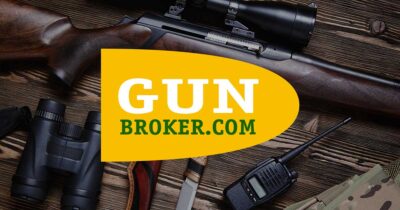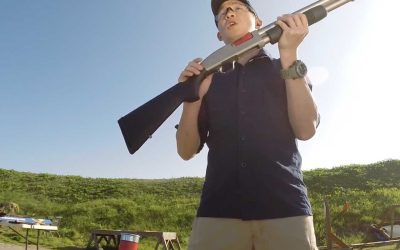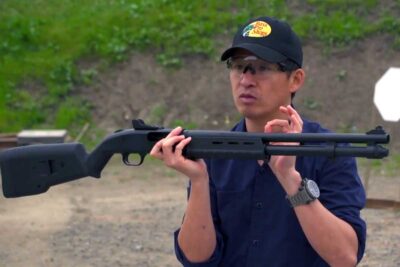Choosing a Field Gun
When it comes to hunting with a shotgun, the biggest divide in types of hunting is between “upland“ game and waterfowl.
How to choose the right upland vs. waterfowl field gun.
One of the surprisingly challenging tasks for people new to hunting is choosing a gun. For someone who has not been raised on guns and gear, the choices can be daunting and overwhelming.
For example: There are shotguns that are over/under, side-by-side, pump action, semi auto, single barrel, high rib, low rib, adjustable stock, synthetic stock, wood stock, camouflage… The choices seem almost endless. Some of the elegant lines and intricate engraving on many firearms can make them, quite literally, a work of art.
Prices on these types of firearms can range from the several thousand to several hundred thousand dollars, and are often relegated to the fields for driven Partridge or pheasant on the fanciest the Estates in Europe, with the occasional US Lodge resort thrown in – and those days, only in the best of weather.
Many serious trap, skeet, and sporting clays shooters have shotguns with adjustable butt plates, adjustable combs, high or low ribs, single or double barrels, that are micro adjustable to fit their exact frame and stature.
The fanciest of these and even some of the finer upland guns can be built up from a single piece of wood and custom fitted to the shooter. These types of guns are made for the discerning shooter with a rather large budget and not for your typical hunter or outdoors person looking for a gun for the field.
There are basically four main components of choosing a field gun – weight, recoil, appearance, and budget.
An upland purist tends to favor lighter guns in smaller configurations, with many choosing smaller gauges than the waterfowl hunter. There are almost as many 20 gauge upland guns in the field as 12 gauge. Loads tend to be lead shot, which allows for a lighter payload and powder charge, equating to less recoil.
Choosing a shotgun for upland hunting
Comparatively, upland hunting is rather easy to set up for. You can hunt most upland game with a gun, proper clothing, and a good pair of boots. Perhaps you add a game vest or pouch of some kind to your kit in order to carry home any game that you harvest and to more easily access additional shotgun shells rather than fishing around in your pocket, but as far as “gear,’ that’s all you need. Walk enough miles in good habitat and you’re likely to find upland game. This is likely the reason that over 6 MILLION hunters pursued some form of upland game last year.
Most hunters that pursue upland game also do so with a working canine companion of the pointing or flushing variety. Some of these are dogs are purely of the upland bird hunting stature, while others, such as the Labrador retriever, cross over to waterfowl. They tend to walk a minimum of several miles per outing, and much of their equipment is decided upon and chosen based on what type of game they mainly pursue, whether they hunt with a dog, and comfort and weight of their gear- including their gun.
Choosing a shotgun for waterfowl hunting
Waterfowl hunters tend to be a little more “serious” in their hunting, as there is a substantial amount of gear and investment required compared to upland hunting. Waterfowl hunters tend to use equipment to move their firearms and associated gear. Typically a boat, but almost as often these days an ATV or side-by-side, is used for transportation to and from a “blind“ or “hide“ where the hunter remains stationary waiting for birds to come to them.
Waterfowl hunting in the United States requires the use of non-toxic shot, the vast majority of which is steel. To overcome the lighter weight of the shot in the ammunition, larger sizes of shot are typically used in a longer cartridge, with a much heavier powder charge. Needless to say, a 3 1/2 inch 12 gauge load of BBs contains significantly more recoil punch than a 7/8 ounce 20 gauge field load.
The duck blind is also not a place you would typically find a 6 lb. 20 gauge over/under with hand engraving and a wood stock.
Heavier, more durable guns that can stand punishing loads, cold, wet weather and typically with synthetic stocks, Cerakoted barrels and actions, or even dipped in camo film from head to toe, The typical waterfowl firearm tends to be a pump or semi auto.
Weight
Due to advances in technology, weight, the place where doubles used to reign supreme, has dramatically decreased in many of the pump and semi-automatic shotguns out there- but your typical semi-auto will still weigh more than your typical double.
Also, even some very nice double guns are now built on an alloy action that wears as long as traditional steel but weighs half as much. Smaller double guns in the 4 to 5 pound range are not uncommon, with many semi autos well below the 7 pound mark. Because upland hunters tend to carry their shotguns many miles over varying terrain, the combined weight of the gun and ammunition are of main concern.
All else being equal, a 20 gauge over under will weigh approximately 1 pound less than a 12 gauge version of the same gun. That, combined with the smaller and lighter ammunition that one must carry, makes the 20 gauge most equal choice to the 12 for hunters pursuing upland game- especially with smaller quarry such as Quail, grouse, woodcock and chukar.
Two top choices here are the Browning Citori feather and the Beretta ultralight– both weighing a svelte 6 to 6.5 lbs in their 12 gauge versions.
In semi-autos, inertia-action guns from manufacturers like Benelli and CZ with a synthetic stock will be to the lighter side.
Pump shotguns tend to be of similar weights, but some manufacturers are making them with a combination of polymer and steel to shave those ounces.
Recoil
While carrying a sub-6 pound over under for 5 miles up and down mountains chasing chukar may be its ideally suited task, putting 100 rounds of heavy loads through it on the sporting clays range is certainly not. If Recoil is a main consideration, the semi-automatic action reigns supreme.
Most upland hunters tend to fire lighter loads less frequently than the typical waterfowl hunter. This is why the double gun still reigns supreme from the hunters in the quail fields of Georgia to the cornfield-pushing pheasant hunters of the midwest.
Waterfowl loads deliver punishing recoil compared to light field loads. Additionally, you typically fire more shots in succession while waterfowl hunting. Whether you are in the fields of South Dakota or the duck blinds of Arkansas, if you want to tame most of that recoil, choose a gas-operated semi-auto like the Browning Maxus, the Winchester Super X4, Remington Versamax, or Beretta A400.
Appearance
If you only walk dry fields after quail and are a stickler for meticulously cleaning and maintaining your guns, an engraved double or semi-auto with a glossy, wood stock and deep, shiny blued barrels that elicits responses of “wow” when you open the case might be for you. If you are chasing snow geese win the spring, pheasants in the wet snow, and ducks in the rain, your best bet is likely something fully dipped in camo or cerakoted (a proprietary treatment that makes metal impervious to almost anything) is what you are looking for.
There is literally every cross-collaboration in-between, depending on the next, and perhaps most important factor…
Budget
Let’s face it- the main determining factor of your firearms purchase is likely related to how much it will cost. There are $200 guns and there are $200,000 guns- and everything in-between. The first question I always ask the prospective new gun buyer is, “What’s your budget?” You can certainly hunt with a $150 single shot and put plenty of game on the table. Fortunately, thanks to both marvels of engineering and U.S. Patent expirations, there are a TON of high-quality firearms being made at every price point.
Typically, price increases from single shot to pump-action to semi-automatic to double (side-by-side and over/under)
Here are some good ones to start with, budget to higher end.
Pumps:
Semi-Automatics:
Double Guns:
Keep in mind, we have plenty of other resources and products available at GunBroker.com, including information for new buyers and sellers. Stop by our site to learn more and find the right deal for you!










